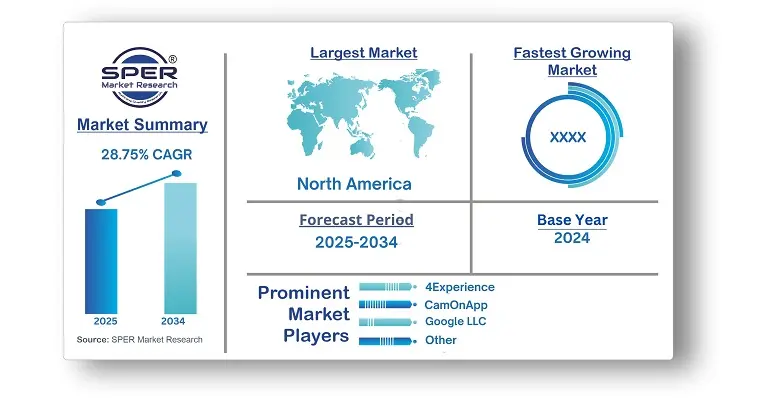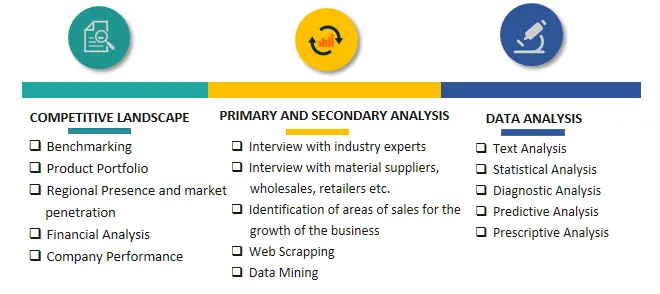
Location-based Entertainment Market Growth, Share and Outlook 2034
Location-based Entertainment Market Size- By Fibers, By End Use - Regional Outlook, Competitive Strategies and Segment Forecast to 2034
| Published: Sep-2025 | Report ID: IACT25154 | Pages: 1 - 234 | Formats*: |
| Category : Information & Communications Technology | |||


- In April 2024, Niantic, Inc. partnered with Trivver to develop an advanced solution for AR ad measurement using 3D Smart Objects, aimed at enhancing both the quality and overall user experience.
- In January 2024, Samsung Electronics launched the Visual eXperience Transformation platform, a cloud-native content management solution that combines content delivery and remote signage management into one secure, integrated platform.
| Report Metric | Details |
| Market size available for years | 2021-2034 |
| Base year considered | 2024 |
| Forecast period | 2025-2034 |
| Segments covered | By Component, By Technology, By End Use |
| Regions covered | North America, Latin America, Asia-Pacific, Europe, and Middle East & Africa |
| Companies Covered | 4Experience, CamOnApp, Google LLC, Cisco HQ Software, Inc., HTC Corporation, Huawei Technologies Co., Ltd., Magic Leap, Inc., Microsoft Corporation, Niantic, Inc., Samsung Electronics Co. Ltd., Springboard VR, VRstudios Inc. |
- Global Location-based Entertainment Market Size (FY’2021-FY’2034)
- Overview of Global Location-based Entertainment Market
- Segmentation of Global Location-based Entertainment Market By Component (Hardware, Software)
- Segmentation of Global Location-based Entertainment Market By Technology (2 Dimensional (2D), 3- & 4-Dimensional (3D & 4D), Cloud Merged Reality (CMR)}
- Segmentation of Global Location-based Entertainment Market By End Use (Amusement Parks, , Arcade Studios, 4D Films)
- Statistical Snap of Global Location-based Entertainment Market
- Expansion Analysis of Global Location-based Entertainment Market
- Problems and Obstacles in Global Location-based Entertainment Market
- Competitive Landscape in the Global Location-based Entertainment Market
- Details on Current Investment in Global Location-based Entertainment Market
- Competitive Analysis of Global Location-based Entertainment Market
- Prominent Players in the Global Location-based Entertainment Market
- SWOT Analysis of Global Location-based Entertainment Market
- Global Location-based Entertainment Market Future Outlook and Projections (FY’2025-FY’2034)
- Recommendations from Analyst
- 1.1. Scope of the report
- 1.2. Market segment analysis
- 2.1. Research data source
- 2.1.1. Secondary Data
- 2.1.2. Primary Data
- 2.1.3. SPERs internal database
- 2.1.4. Premium insight from KOLs
- 2.2. Market size estimation
- 2.2.1. Top-down and Bottom-up approach
- 2.3. Data triangulation
- 4.1. Driver, Restraint, Opportunity and Challenges analysis
- 4.1.1. Drivers
- 4.1.2. Restraints
- 4.1.3. Opportunities
- 4.1.4. Challenges
- 5.1. SWOT Analysis
- 5.1.1. Strengths
- 5.1.2. Weaknesses
- 5.1.3. Opportunities
- 5.1.4. Threats
- 5.2. PESTEL Analysis
- 5.2.1. Political Landscape
- 5.2.2. Economic Landscape
- 5.2.3. Social Landscape
- 5.2.4. Technological Landscape
- 5.2.5. Environmental Landscape
- 5.2.6. Legal Landscape
- 5.3. PORTERs Five Forces
- 5.3.1. Bargaining power of suppliers
- 5.3.2. Bargaining power of buyers
- 5.3.3. Threat of Substitute
- 5.3.4. Threat of new entrant
- 5.3.5. Competitive rivalry
- 5.4. Heat Map Analysis
- 6.1. Global Location-based Entertainment Market Manufacturing Base Distribution, Sales Area, Product Type
- 6.2. Mergers & Acquisitions, Partnerships, Product Launch, and Collaboration in Global Location-based Entertainment Market
- 7.1. Hardware
- 7.2. Software
- 8.1. 2 Dimensional (2D)
- 8.2. 3- & 4-Dimensional (3D & 4D)
- 8.3. Cloud Merged Reality (CMR)
- 9.1. Amusement Parks
- 9.1.1. Indoor
- 9.1.2. Outdoor
- 9.2. Arcade Studios
- 9.3. 4D Films
- 10.1. Global Location-based Entertainment Market Size and Market Share
- 11.1. Asia-Pacific
- 11.1.1. Australia
- 11.1.2. China
- 11.1.3. India
- 11.1.4. Japan
- 11.1.5. South Korea
- 11.1.6. Rest of Asia-Pacific
- 11.2. Europe
- 11.2.1. France
- 11.2.2. Germany
- 11.2.3. Italy
- 11.2.4. Spain
- 11.2.5. United Kingdom
- 11.2.6. Rest of Europe
- 11.3. Middle East and Africa
- 11.3.1. Kingdom of Saudi Arabia
- 11.3.2. United Arab Emirates
- 11.3.3. Qatar
- 11.3.4. South Africa
- 11.3.5. Egypt
- 11.3.6. Morocco
- 11.3.7. Nigeria
- 11.3.8. Rest of Middle-East and Africa
- 11.4. North America
- 11.4.1. Canada
- 11.4.2. Mexico
- 11.4.3. United States
- 11.5. Latin America
- 11.5.1. Argentina
- 11.5.2. Brazil
- 11.5.3. Rest of Latin America
- 12.1. 4Expeience
- 12.1.1. Company details
- 12.1.2. Financial outlook
- 12.1.3. Product summary
- 12.1.4. Recent developments
- 12.2. CamOnApp
- 12.2.1. Company details
- 12.2.2. Financial outlook
- 12.2.3. Product summary
- 12.2.4. Recent developments
- 12.3. Google LLC
- 12.3.1. Company details
- 12.3.2. Financial outlook
- 12.3.3. Product summary
- 12.3.4. Recent developments
- 12.4. Cisco HQ Software, Inc
- 12.4.1. Company details
- 12.4.2. Financial outlook
- 12.4.3. Product summary
- 12.4.4. Recent developments
- 12.5. HTC Corporation
- 12.5.1. Company details
- 12.5.2. Financial outlook
- 12.5.3. Product summary
- 12.5.4. Recent developments
- 12.6. Huawei Technologies Co., Ltd
- 12.6.1. Company details
- 12.6.2. Financial outlook
- 12.6.3. Product summary
- 12.6.4. Recent developments
- 12.7. Magic Leap, Inc
- 12.7.1. Company details
- 12.7.2. Financial outlook
- 12.7.3. Product summary
- 12.7.4. Recent developments
- 12.8. Microsoft Corporation
- 12.8.1. Company details
- 12.8.2. Financial outlook
- 12.8.3. Product summary
- 12.8.4. Recent developments
- 12.9. Niantic, Inc.
- 12.9.1. Company details
- 12.9.2. Financial outlook
- 12.9.3. Product summary
- 12.9.4. Recent developments
- 12.10. Samsung Electronics Co. Ltd.
- 12.10.1. Company details
- 12.10.2. Financial outlook
- 12.10.3. Product summary
- 12.10.4. Recent developments
- 12.11. Springboard VR
- 12.11.1. Company details
- 12.11.2. Financial outlook
- 12.11.3. Product summary
- 12.11.4. Recent developments
- 12.12. VRstudios Inc
- 12.12.1. Company details
- 12.12.2. Financial outlook
- 12.12.3. Product summary
- 12.12.4. Recent developments
- 12.13. Others
SPER Market Research’s methodology uses great emphasis on primary research to ensure that the market intelligence insights are up to date, reliable and accurate. Primary interviews are done with players involved in each phase of a supply chain to analyze the market forecasting. The secondary research method is used to help you fully understand how the future markets and the spending patterns look likes.
The report is based on in-depth qualitative and quantitative analysis of the Product Market. The quantitative analysis involves the application of various projection and sampling techniques. The qualitative analysis involves primary interviews, surveys, and vendor briefings. The data gathered as a result of these processes are validated through experts opinion. Our research methodology entails an ideal mixture of primary and secondary initiatives.



Frequently Asked Questions About This Report
PLACE AN ORDER
Year End Discount
Sample Report
Pre-Purchase Inquiry
NEED CUSTOMIZATION?
Request CustomizationCALL OR EMAIL US
100% Secure Payment






Related Reports
Our Global Clients
Our data-driven insights have influenced the strategy of 200+ reputed companies across the globe.






















